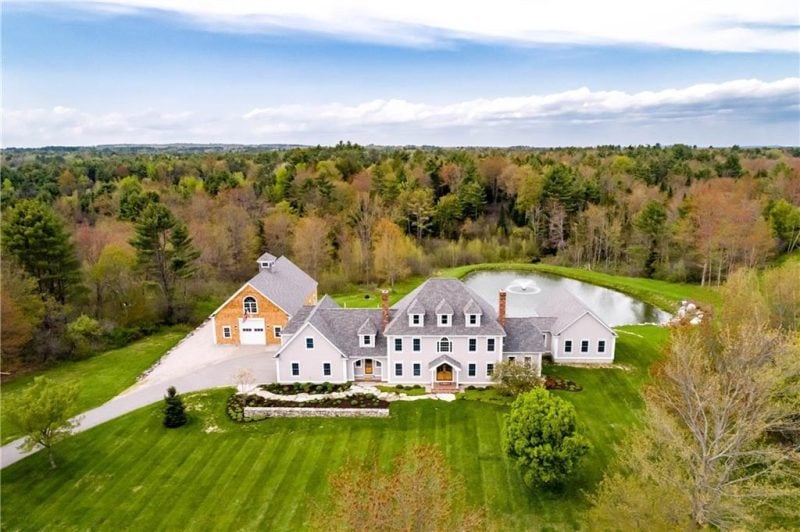The 30 Best Suburbs in North Carolina: Top Family-Friendly Communities
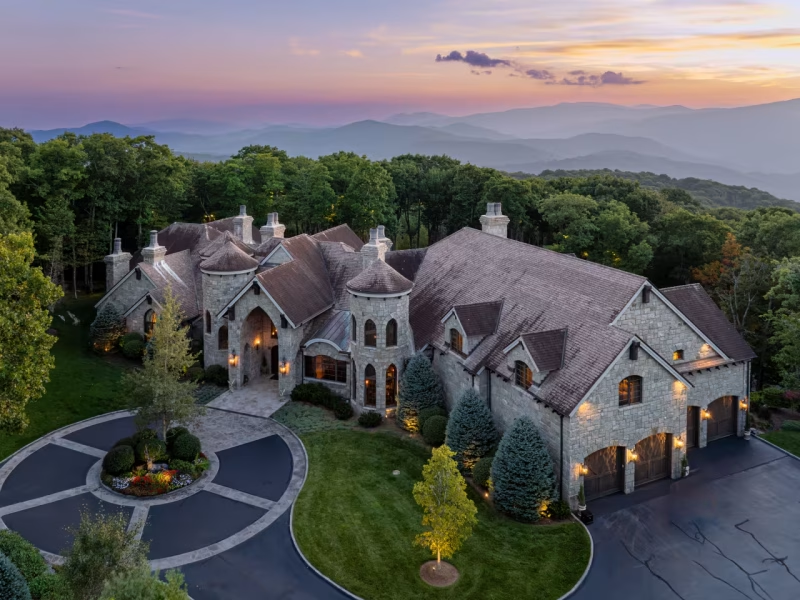
North Carolina offers an impressive variety of suburban communities that combine the best of modern living with Southern charm.
From the Research Triangle area to the mountains near Asheville, these communities provide residents with excellent schools, safe neighborhoods, and convenient access to major employment centers.
This comprehensive guide examines the top 30 suburban areas across North Carolina, analyzing factors such as housing costs, school quality, safety ratings, and local amenities to help prospective residents make informed decisions.
The rankings include established communities near major cities like Charlotte, Raleigh, and Durham, as well as emerging suburban areas that offer unique advantages for families and professionals seeking their ideal home.
Here are the 30 best suburbs in North Carolina:
1. Apex
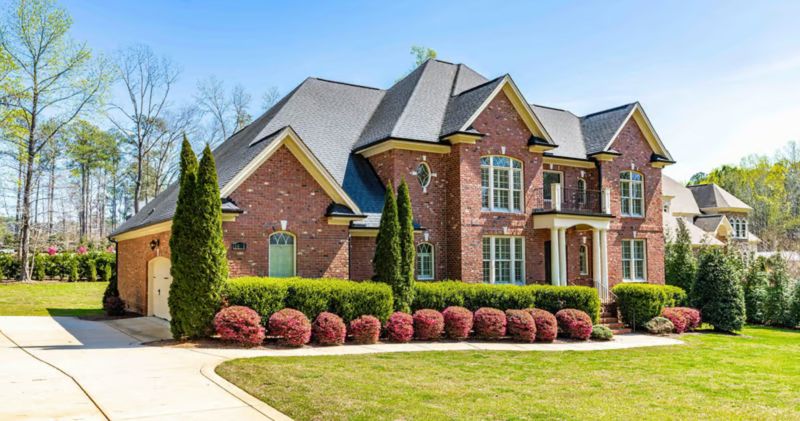
Apex stands out as one of North Carolina’s premier suburban communities. Located in Wake County near Raleigh, this town offers residents an ideal blend of small-town charm and modern amenities.
The community features a pedestrian-friendly historic downtown district. Tree-lined streets and well-maintained parks create an attractive residential environment throughout the area.
Apex consistently ranks among the top suburbs in North Carolina for families and professionals. The town’s proximity to Research Triangle Park makes it particularly appealing to those working in technology and research sectors.
Public schools in Apex receive high ratings for academic performance. These educational opportunities attract families seeking quality schooling options for their children.
Housing options range from historic homes near downtown to newer developments in surrounding neighborhoods. The median home value reflects the area’s desirability and strong real estate market.
Recreation facilities include numerous parks and athletic complexes. Residents enjoy access to walking trails, sports fields, and community programs throughout the year.
The town maintains low crime rates compared to other North Carolina communities. This safety record contributes to Apex’s reputation as a desirable place to raise families.
Transportation connections provide easy access to Raleigh and surrounding areas. Commuters benefit from the town’s strategic location within the greater Triangle region.
2. Cary

Cary consistently ranks as one of North Carolina’s premier suburbs. The city holds the distinction of being named the best place to live in North Carolina by Money magazine.
Safety stands out as a defining characteristic. Cary maintains one of the lowest crime rates in the United States, making it attractive to families and professionals alike.
The community offers strong economic fundamentals. Median household income exceeds $120,000, reflecting the area’s prosperity and educated workforce.
Housing costs align with the suburb’s desirability. The median home price reaches approximately $306,200, which exceeds the state average but reflects quality amenities and location benefits.
Educational excellence draws many residents. The area features top-rated schools that consistently perform well in state rankings.
Location provides significant advantages. Cary sits within the Research Triangle Park region, offering easy access to major employment centers and Downtown Raleigh.
The suburb attracts diverse demographics. Young professionals, growing families, and retirees all find suitable neighborhoods and amenities within Cary’s boundaries.
Community planning emphasizes quality of life. Many neighborhoods feature pools, parks, and recreational facilities that foster resident engagement and satisfaction.
3. Chapel Hill
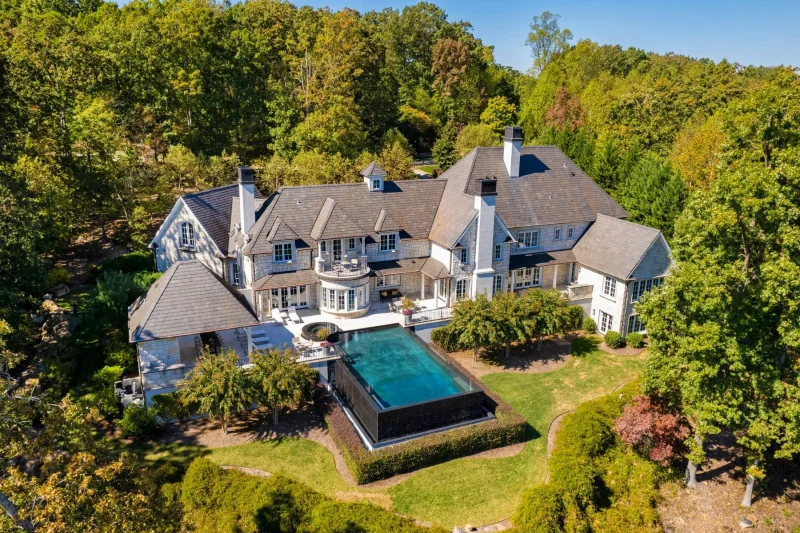
Chapel Hill ranks among North Carolina’s most desirable suburbs, earning recognition for its exceptional public schools and educated population. The city holds the second position for best public schools in the state.
The University of North Carolina anchors this vibrant community, contributing to its intellectual atmosphere and cultural offerings. Residents benefit from proximity to top-tier healthcare facilities and UNC Hospitals.
Chapel Hill’s neighborhoods offer diverse housing options with strong market values. Home prices exceed the state average of $226,477, reflecting high demand for the area.
The Research Triangle Park location provides excellent employment opportunities in technology and research sectors. This proximity attracts professionals seeking career advancement in innovative industries.
Public amenities include well-maintained parks, recreational facilities, and cultural venues. The city supports an active community with events and programs throughout the year.
Chapel Hill’s combination of educational excellence, healthcare access, and economic opportunities makes it attractive to families and young professionals. The suburb successfully balances small-town charm with metropolitan conveniences.
Transportation connections to Raleigh and Durham enhance the area’s appeal for commuters. Local infrastructure supports both residents and the substantial university population effectively.
4. Davidson
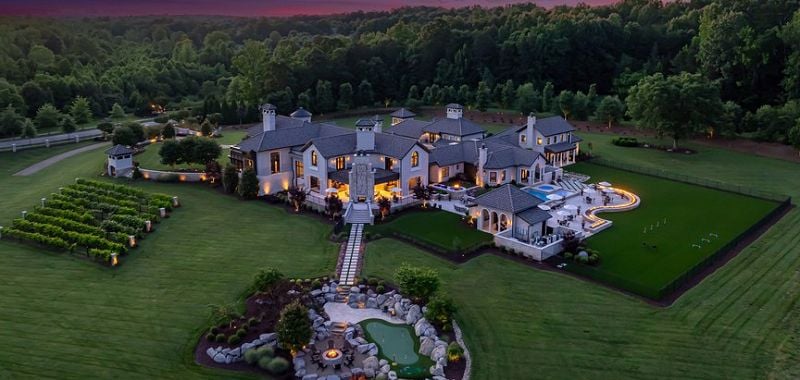
Davidson ranks fourth among North Carolina’s best suburbs, earning a 4.5-star average rating from residents. This charming town sits 20 miles north of Charlotte on the banks of Lake Norman.
The community maintains the heart of a college town while preserving its close-knit atmosphere. Davidson College, established alongside the town by Presbyterians in 1837, remains central to the area’s identity.
With a population of approximately 15,000 residents, Davidson offers easy access to downtown Charlotte while maintaining its suburban appeal. The town sits just 22 miles from uptown Charlotte and 14 miles from Lake Norman.
Davidson consistently receives recognition as an exceptional place to raise families. The suburb ranks eighth out of 509 locations for best places to raise a family in North Carolina.
Young professionals also find Davidson appealing, with the town ranking twelfth among North Carolina suburbs for this demographic. The combination of excellent schools, safe neighborhoods, and proximity to employment centers contributes to its popularity.
Residents appreciate the walkable downtown area and well-maintained neighborhoods. The town’s location provides both suburban tranquility and convenient access to urban amenities in nearby Charlotte.
5. Cornelius
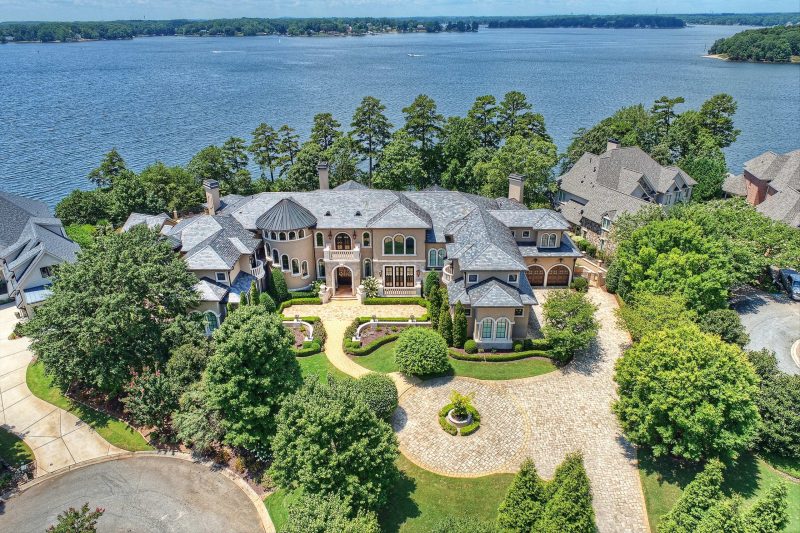
Cornelius ranks as the 17th best suburb to live in North Carolina according to 2025 rankings. This Charlotte suburb has earned recognition for its exceptional quality of life and family-friendly atmosphere.
The town sits in Mecklenburg County with a population of approximately 32,000 residents. Most people own their homes in this dense suburban community that attracts both families and young professionals.
Lake Norman serves as Cornelius’s crown jewel, offering over 520 miles of shoreline for recreation. The massive man-made lake provides residents with boating, swimming, and waterfront activities year-round.
Cornelius maintains close proximity to Charlotte, positioned just 20 to 30 minutes from the city center. This location allows residents to enjoy suburban tranquility while accessing urban employment and entertainment options.
The community features numerous restaurants and parks throughout the area. Lake Norman State Park offers hiking trails and scenic views for outdoor enthusiasts.
Niche users rate Cornelius 4.4 out of 5 stars based on factors including public schools, safety, and local amenities. The town consistently appears on best places to live lists for the Charlotte metropolitan area.
Housing costs exceed North Carolina’s state average, reflecting the desirability of this lakefront community.
6. Morrisville
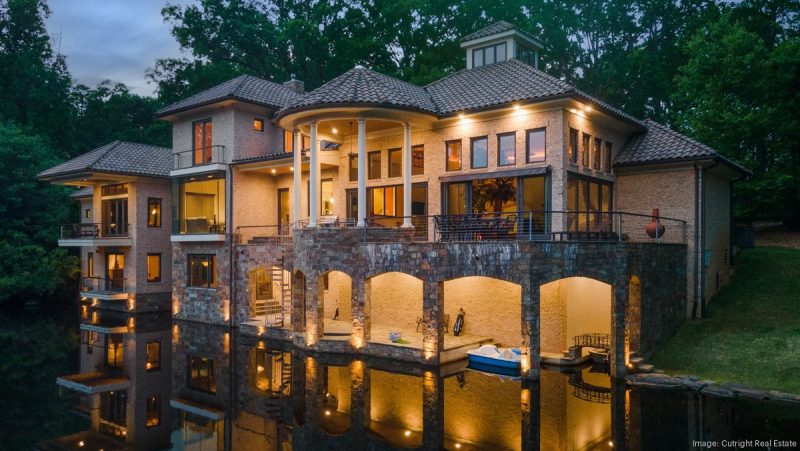
Morrisville stands out as one of North Carolina’s fastest-growing suburbs and consistently ranks among the state’s best places to live. The town attracts young professionals, families, and retirees seeking quality amenities and strategic location.
Located in the Research Triangle Park area, Morrisville offers residents easy access to major employment centers and research facilities. This proximity to RTP makes it particularly appealing to technology professionals and researchers.
The community excels in education, ranking third for places with the best public schools in North Carolina. Parents find the school system a major draw when considering relocation to the area.
Niche awarded Morrisville the second position on its list of North Carolina’s best suburbs for young professionals. WalletHub recognized it as the 11th-best small city nationally for starting a business.
Housing costs in Morrisville exceed the state average of $226,477, reflecting the area’s desirability and growth. The town’s neighborhoods command premium prices compared to other North Carolina communities.
Morrisville has attracted residents from the Northeast who appreciate the lower living costs, favorable climate, and relaxed lifestyle compared to their previous locations.
7. Holly Springs
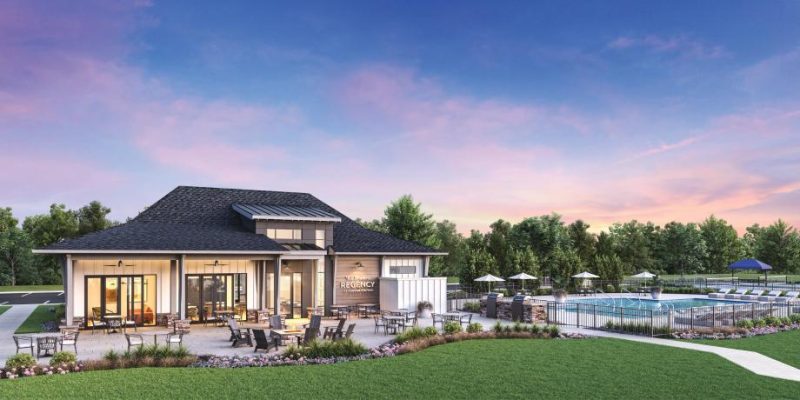
Holly Springs sits in Wake County, just south of downtown Raleigh. This rapidly growing suburb has earned recognition as one of North Carolina’s most desirable places to live.
The town combines small-town charm with modern amenities. Its historic downtown district provides a picturesque setting while new developments offer contemporary housing options.
Strong public schools make Holly Springs particularly attractive to families. The community maintains a family-first atmosphere with safe neighborhoods and active community programs.
Home values in Holly Springs exceed the North Carolina state average of $226,477. The higher cost reflects the area’s desirability and quality of life offerings.
The local economy benefits from proximity to Raleigh’s tech and biotech sectors. Many educated professionals choose Holly Springs for the space and suburban feel while maintaining access to metropolitan job opportunities.
Residents enjoy diverse dining options, including authentic Thai cuisine and fresh sushi establishments. The town successfully balances growth with community character.
Holly Springs attracts people seeking suburban living without sacrificing urban conveniences. Its location southwest of Raleigh provides easy access to the larger metro area while offering a quieter residential environment.
8. Wake Forest
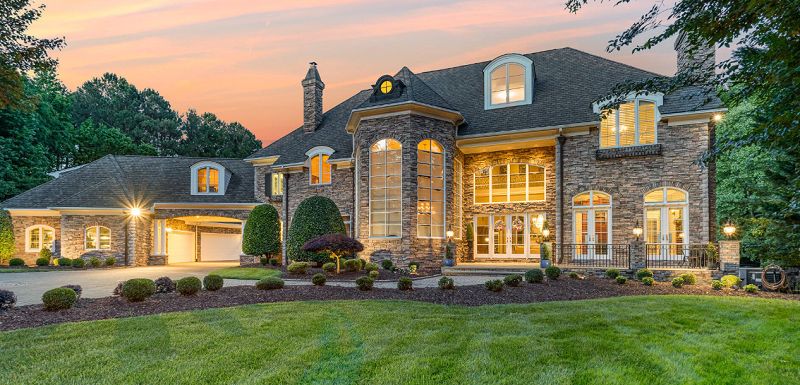
Wake Forest sits 18 miles north of downtown Raleigh in Wake County. The town offers direct access via US 1, making commutes convenient for residents.
The drive to Raleigh’s city center takes about 30 minutes. Residents also enjoy 30-minute access to RDU airport and Research Triangle Park.
Wake Forest ranks 13th out of 185 best suburbs in North Carolina. The town places 24th for best public schools among North Carolina suburbs.
Heritage stands out as a master-planned golf community with homes ranging from the $300s to $1.3 million. The neighborhood connects to 15 miles of Wake Forest’s greenway system.
Hasentree and Wakefield represent other popular neighborhoods drawing families to the area. These communities offer modern amenities while maintaining the town’s character.
The local economy includes tech and biotech jobs, attracting educated professionals. This economic base supports steady growth and development.
Wake Forest combines historic downtown charm with new suburban developments. Falls Lake provides recreational opportunities for outdoor enthusiasts.
Home prices exceed the North Carolina state average of $226,477. The higher costs reflect strong demand and desirable location within the Triangle region.
9. Waxhaw
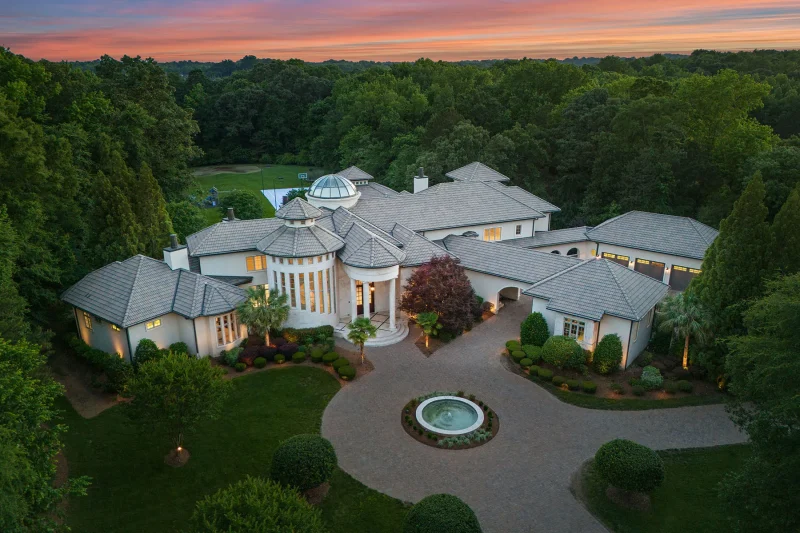
Waxhaw stands as one of North Carolina’s premier suburban communities, ranking 22nd among the state’s best suburbs to live in. This Union County town offers residents a distinctive rural atmosphere while maintaining proximity to Charlotte’s urban amenities.
The community has grown to approximately 21,565 residents who enjoy a family-oriented environment. Most residents own their homes, contributing to the area’s stable neighborhood character.
Waxhaw’s public school system receives high ratings, making it particularly attractive to families with children. The town ranks 17th among North Carolina’s best suburbs for raising a family.
The area provides excellent safety records and low crime rates compared to state averages. These factors contribute significantly to its appeal among families and retirees seeking secure living environments.
Housing costs in Waxhaw exceed the North Carolina state average of $226,477, reflecting the community’s desirability and quality of life. The higher property values indicate strong market demand for homes in the area.
Residents benefit from Waxhaw’s strategic location, which offers rural tranquility without sacrificing access to Charlotte’s employment opportunities and cultural attractions. This balance makes it an ideal choice for those seeking suburban living with urban convenience.
10. Rolesville
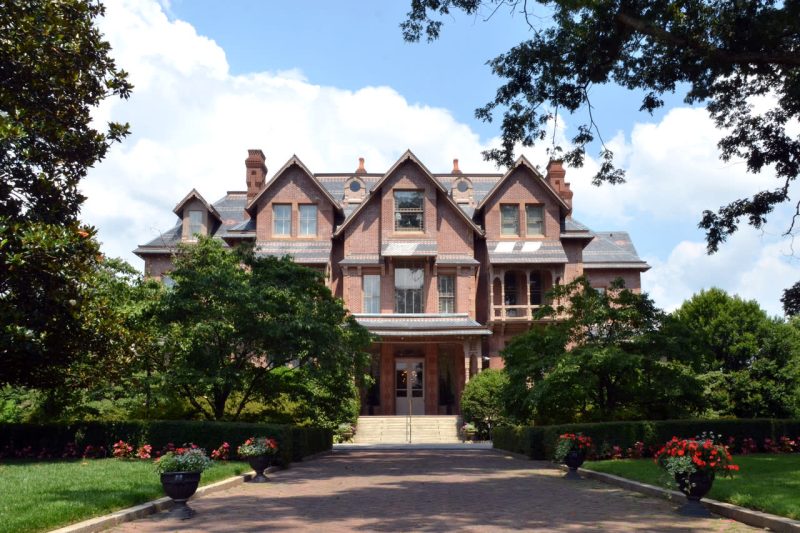
Rolesville stands out as one of North Carolina’s premier suburbs for families and young professionals. The town consistently ranks among the best suburbs in the state for its excellent public schools and strong community atmosphere.
Located in Wake County, Rolesville offers convenient access to the Research Triangle area. Residents enjoy a strategic position that combines suburban tranquility with proximity to major employment centers.
The housing market in Rolesville reflects high demand from buyers seeking quality neighborhoods. Home values exceed the North Carolina state average, indicating the area’s desirability and investment potential.
Families choose Rolesville for its top-rated school system and safe neighborhoods. The town attracts residents from across the country who value educational excellence and community involvement.
The cost of living remains reasonable despite the town’s growing popularity. Rolesville provides an attractive balance between affordability and quality of life compared to larger metropolitan areas.
Young professionals appreciate the town’s modern amenities and growing job market. The area continues to experience steady population growth as more people discover its advantages.
Rolesville’s neighborhoods offer diverse housing options from starter homes to luxury properties. Each area maintains its own character while contributing to the town’s overall appeal.
11. Pinehurst
Pinehurst stands out as one of North Carolina’s premier suburban communities, combining small-town charm with world-class amenities. The town maintains a population of approximately 18,000 residents in Moore County.
The community is internationally recognized for its championship golf courses and hosts major tournaments throughout the year. These facilities attract visitors while maintaining the town’s distinctive Southern village atmosphere.
Safety ranks as a top priority in Pinehurst, with crime rates 84% lower than the North Carolina average. The town earned recognition as one of the safest cities in the state for 2022.
Housing costs reflect the area’s desirability, with median home prices around $328,000. This represents a significant premium compared to the state average of $226,000, though prices remain competitive with national standards.
The town appeals particularly to retirees and families seeking a peaceful environment. Scenic pine forests surround the community, creating a natural buffer that enhances the rural feel while maintaining suburban conveniences.
Pinehurst offers excellent healthcare services and maintains a variety of restaurants, coffee shops, and parks. The combination of low crime, natural beauty, and quality amenities creates an attractive package for prospective residents.
12. Weaverville
Weaverville ranks as the 26th best suburb to live in North Carolina and 14th best place to retire in the state. This charming small town sits just 15 minutes north of Asheville in Buncombe County.
The town offers scenic beauty with the Blue Ridge Mountains rising about 30 miles south. Densely wooded foothills and mountains surround the area, particularly to the north and west.
Median home prices in Weaverville reach $320,300, which is 103.9% higher than the North Carolina average. These prices remain similar to the national median, making homes more expensive than most state markets.
The home price to income ratio stands at 4.5, which is 36.4% higher than North Carolina’s average. This reflects the town’s desirability and proximity to Asheville.
Weaverville provides close access to the Blue Ridge Parkway and numerous outdoor activities. The town maintains a vibrant local culture with a strong sense of community.
Mixed vegetation grows throughout the valley, creating natural beauty year-round. The location offers peaceful suburban living while keeping urban amenities within easy reach through nearby Asheville.
13. Matthews
Matthews stands out as one of Charlotte’s most desirable suburban communities. The town offers charming neighborhoods that appeal to families and professionals seeking quality living options.
Home prices in Matthews exceed North Carolina’s state average of $226,477. This premium reflects the area’s strong market demand and desirable location within the Charlotte metropolitan area.
The community features diverse neighborhoods like Brightmoor and Somersby Park. These areas provide varied housing choices alongside access to parks, local amenities, and community events.
Matthews maintains its small-town charm while offering modern conveniences. Residents benefit from the town’s strategic location, providing easy access to Charlotte’s employment centers and entertainment options.
The suburb attracts buyers looking for neighborhood stability and community engagement. Local amenities support an active lifestyle, with recreational facilities and green spaces throughout the area.
Matthews has earned recognition among North Carolina’s top suburban destinations. The town successfully balances residential appeal with practical considerations like commuter access and local services.
Families particularly appreciate the area’s commitment to maintaining neighborhood character. The community offers a suburban lifestyle that combines convenience with a strong sense of place.
14. Huntersville
Huntersville ranks as the 18th best suburb to live in North Carolina out of 185 communities. The town sits just north of Charlotte and offers easy access to Lake Norman’s recreational opportunities.
This rapidly growing suburb balances urban convenience with suburban tranquility. Families appreciate the excellent school systems and safe neighborhoods throughout the area.
Home prices in Huntersville exceed the North Carolina average of $226,477. The real estate market reflects strong demand from professionals commuting to Charlotte and families seeking quality communities.
The town provides extensive outdoor recreation options. Residents enjoy numerous greenways, proximity to the US National Whitewater Center, and Lake Norman’s waterfront activities.
Huntersville attracts young professionals, ranking 15th out of 185 North Carolina suburbs in this category. The community combines small-town charm with modern amenities and shopping districts.
The area features diverse dining and retail options. Outdoor enthusiasts find abundant recreational opportunities within the town and surrounding region.
Huntersville’s location offers the benefits of suburban living while maintaining convenient access to Charlotte’s employment centers. The community continues attracting homebuyers seeking family-friendly environments with strong local amenities.
15. Hickory
Hickory ranks as one of North Carolina’s most affordable and desirable places to live. The city earned recognition from U.S. News and World Report as the 25th best place to live in America for 2023-2024.
Located in Catawba County near the Appalachian Mountain foothills, Hickory offers residents scenic beauty and convenient access. Interstate 40 runs directly through the city, providing easy transportation throughout North Carolina.
Home prices in Hickory remain below the state average of $226,477, making homeownership accessible for many families. The city consistently ranks in the top 10 best places to live in North Carolina across multiple publications.
Downtown Hickory features a revitalized historic district with urban amenities and entertainment options. Viewmont provides an established neighborhood atmosphere with diverse housing styles and quality schools.
Mountain View offers larger lots and custom homes for those seeking more space. The Oakwood historic district preserves the city’s architectural heritage while maintaining modern conveniences.
Hickory’s economy centers around its traditional furniture industry while expanding into outdoor recreation and tourism. The combination of affordability, location, and amenities attracts growing numbers of new residents each year.
16. Mooresville
Mooresville ranks as the 28th best suburb to live in North Carolina out of 185 communities. The suburb also places 13th among the best suburbs for young professionals in the state.
This Charlotte suburb has a population of 51,447 residents in Iredell County. Mooresville offers a dense suburban feel where most residents own their homes.
The community attracts both families and young professionals. Home prices in Mooresville exceed the North Carolina state average of $226,477, reflecting the area’s desirability.
Mooresville sits approximately 30 minutes north of Uptown Charlotte. The location provides convenient access to urban amenities while maintaining a suburban atmosphere.
The Langtree Peninsula area offers waterfront living options. Neighborhoods like Bridgeport provide lake access and sit close to Davidson College and Birkdale Village.
The suburb features quality public schools and low crime rates. These factors contribute to Mooresville’s family-friendly environment and strong community appeal.
Mooresville combines safety with modern amenities. The town provides residents with access to recreational activities while maintaining proximity to Charlotte’s employment opportunities.
17. Gastonia
Gastonia sits just west of Charlotte, offering residents affordable living with convenient access to the state’s largest city. The growing community blends suburban comfort with strong economic opportunities.
Home prices in Gastonia remain below North Carolina’s state average of $226,477. This affordability attracts young professionals and families seeking value without sacrificing quality of life.
The city features several desirable neighborhoods for different lifestyles. Kendrick Farms offers modern amenities and family-friendly atmosphere in a newer development setting.
Gardner Park provides established charm with tree-lined streets and historic character. Catawba Hills appeals to those wanting scenic views and larger residential lots.
Gastonia maintains excellent schools that draw families to the area. The community also offers beautiful parks and recreational spaces throughout the city.
The location provides easy commuter access to Charlotte while maintaining lower living costs. Residents enjoy small-city charm with big-city conveniences nearby.
Strong community ties and local amenities make Gastonia attractive for various demographics. The city continues experiencing steady growth as more people discover its benefits.
18. Moore County
Moore County offers a blend of peaceful communities and outdoor recreation that attracts residents seeking quality living. The county seat is Carthage, with Aberdeen and Pinehurst serving as other notable municipalities.
Pinehurst stands out as the county’s premier destination for golf enthusiasts. The town provides scenic landscapes and outdoor activities beyond golf courses. Residents appreciate the peaceful atmosphere and well-maintained neighborhoods.
The county benefits from mild weather year-round, making outdoor activities accessible in most seasons. Its location provides reasonable access to larger cities like Fayetteville and Raleigh for employment and entertainment options.
Housing costs in Moore County exceed the North Carolina state average of $226,477. The higher prices reflect the desirability of the area and quality of life offered to residents.
Moore County serves as a regional shopping hub with strong local business support. Cameron earned recognition from Our State Magazine as the best antique area in North Carolina. Downtown areas feature art galleries, boutique stores, and specialty shops.
The county’s 2020 population reached approximately 88,375 residents, ranking it 31st among North Carolina counties. This size provides community feel while supporting necessary amenities and services.
19. Winston-Salem Suburbs
Winston-Salem ranks as the fifth most populous city in North Carolina and anchors the Piedmont Triad region. The city’s suburbs offer diverse living options for families and professionals seeking quality communities.
Mount Tabor stands out as one of the premier family neighborhoods. This established area features tree-lined streets and well-maintained homes that attract residents prioritizing safety and community atmosphere.
Sherwood Forest provides another excellent suburban option with spacious properties and quiet residential streets. The neighborhood maintains a strong sense of community while offering convenient access to city amenities.
Buena Vista appeals to residents seeking a blend of suburban comfort and urban accessibility. The area features diverse housing options and maintains proximity to downtown Winston-Salem’s employment centers.
Pfafftown, located in the rural outskirts, attracts families with children due to its highly regarded Reagan High School. This suburban community offers larger lots and a more rural feel while maintaining reasonable commute times.
The University of North Carolina School of the Arts adds cultural vibrancy to nearby residential areas. This institution contributes to the progressive energy found in several Winston-Salem suburbs.
Winston-Salem suburbs generally offer more affordable housing compared to other major North Carolina metropolitan areas while providing access to quality schools and recreational facilities.
20. Greensboro Suburbs
Greensboro offers diverse suburban communities that attract families and professionals throughout the Piedmont Triad region. The city’s suburbs benefit from strong employment opportunities with major companies like VF Corporation and Qorvo maintaining headquarters in the area.
Gibsonville and Stokesdale rank among the top suburban choices for residents seeking quality neighborhoods. These communities provide excellent access to Greensboro’s amenities while maintaining their distinct suburban character.
Housing costs in Greensboro suburbs remain below North Carolina’s state average of $226,477. This affordability makes the area attractive for first-time homebuyers and families looking to maximize their purchasing power.
The suburbs feature highly-rated public schools that draw families with children. Crime rates in many suburban areas stay low compared to urban centers, creating safe environments for residents.
Local amenities include parks, shopping centers, and recreational facilities that serve suburban communities. The interstate system provides convenient access to downtown Greensboro and neighboring cities in the Triad region.
Greensboro’s suburban development reflects mid-20th century growth patterns with single-family homes and established neighborhoods. The area’s population exceeds 280,000, offering suburban residents access to urban conveniences while maintaining quieter residential settings.
21. Charlotte Suburbs
Charlotte’s suburban communities offer diverse living options within reach of North Carolina’s largest city. These neighborhoods combine urban accessibility with suburban comfort.
Davidson stands out as a premier lakeside community located 25 minutes north of Charlotte. The town features a median household income of $109,900 and home prices around $515,000. Residents enjoy access to Lake Norman and a close-knit community atmosphere.
Tega Cay consistently ranks among the top Charlotte suburbs. This planned community provides excellent amenities and maintains high property values. The area attracts families seeking quality schools and recreational facilities.
Several Charlotte suburbs excel in different categories. Some focus on affordability while others emphasize luxury amenities. School districts vary significantly between communities, making research essential for families.
The region’s suburbs benefit from Charlotte’s economic growth and job market. Commute times typically range from 20 to 45 minutes depending on location and traffic patterns.
Real estate options span from starter homes to luxury properties. Many suburbs feature newer construction with modern amenities. Established neighborhoods offer mature trees and traditional architecture.
Charlotte’s suburban growth continues expanding outward. New developments regularly emerge in surrounding counties, providing additional housing choices for prospective residents.
22. Raleigh Suburbs
Raleigh’s suburbs consistently rank among North Carolina’s most desirable residential areas. The region offers exceptional schools, strong job markets, and convenient access to the state capital.
Cary stands out as the premier suburb with a median household income of $129,399. This community features top-rated schools, extensive parks, and a 20-minute commute to downtown Raleigh.
Apex ranks as another leading suburb, frequently appearing on best places to live lists. Both communities offer modern amenities while maintaining small-town charm.
Chapel Hill provides a university town atmosphere with excellent educational opportunities. The area attracts families seeking quality schools and cultural activities.
Most Raleigh suburbs fall within a 30-mile radius of the city center. This proximity allows residents to enjoy suburban living while accessing urban employment and entertainment options.
The region’s rapid growth reflects its appeal to professionals and families. Strong infrastructure, diverse housing options, and reasonable commute times contribute to the area’s popularity.
Housing prices vary significantly across suburbs, with some areas exceeding $700,000 median sale prices. More affordable options exist for buyers seeking value without sacrificing quality amenities.
These suburbs benefit from North Carolina’s business-friendly environment and the Research Triangle’s technology sector growth.
23. Durham Suburbs
Durham offers several attractive suburban communities for families and professionals. The area provides a dense suburban feel while maintaining access to urban amenities and employment opportunities.
Cary and Apex rank as the top Durham suburbs based on recent analyses. These communities offer strong public schools, low crime rates, and family-friendly environments.
Chapel Hill serves as another premier suburban option near Durham. As part of the Research Triangle alongside Durham and Raleigh, it provides excellent educational opportunities and cultural amenities.
Durham’s suburban areas typically feature higher home values than the North Carolina average. The median property value in the Durham area reaches $407,060, with a homeownership rate of 62 percent.
The region attracts residents seeking quality public schools and safe neighborhoods. Many suburbs offer convenient access to Research Triangle employers and universities.
Durham suburbs provide restaurants, parks, museums, and entertainment options. The area appeals to millennials entering the homebuying market and families looking to scale up their living situations.
Transportation access to Raleigh and other Triangle cities makes these suburbs practical for commuters. The communities balance suburban convenience with proximity to urban job centers and cultural attractions.
24. Asheville Area Suburbs
Asheville’s suburbs offer diverse living options from metropolitan communities to private mountain enclaves. These areas provide residents with mountain views while maintaining access to city amenities.
North Asheville features popular neighborhoods like Beaverdam, Lakeview Park, and Grove Park. These communities attract retirees, college students, families, and young professionals seeking varied lifestyle options.
The area’s main transportation routes include Merrimon Avenue and Charlotte Street. These roads can experience congestion during peak hours due to the growing population.
Asheville ranks as the 16th safest large city in North Carolina. This safety rating makes the surrounding suburbs attractive to families considering relocation.
The suburbs blend mountain living with modern conveniences. Residents enjoy access to quality stores, restaurants, and recreational activities while living in quieter residential areas.
These communities offer a range of housing options and price points. From affordable family neighborhoods to upscale mountain developments, the Asheville area suburbs accommodate different budgets and preferences.
The region’s appeal stems from its combination of natural beauty and urban proximity. Residents can enjoy mountain tranquility while remaining connected to Asheville’s cultural and economic opportunities.
25. Fayetteville Suburbs
Spring Lake ranks as the top suburb in the Fayetteville area. This community of 11,629 residents benefits from its proximity to Fort Liberty, creating a strong sense of security and discipline.
Vander claims the second position among Fayetteville suburbs. The area offers a low cost of living and diverse housing options. Main Street provides dining and shopping opportunities amid scenic hills.
Pinehurst and Whispering Pines stand out as premium suburban choices. These communities offer higher-end living within 30 miles of Fayetteville.
Hope Mills attracts young professionals and families with its spacious layout. The suburb has a population of 15,769 and high homeownership rates. It earned recognition as one of North Carolina’s most diverse suburbs.
Arran Hills provides affordable housing minutes from Fort Liberty. The neighborhood sits surrounded by shopping centers and restaurants. Military families find this area particularly appealing.
Most Fayetteville suburbs offer safe environments suitable for families and retirees. Home prices remain below the North Carolina state average of $226,477. The area’s military presence contributes to community stability and economic support across these suburban communities.
26. New Bern Area
New Bern stands as North Carolina’s second-oldest city, offering residents a unique blend of coastal charm and historical significance. The area ranks fifth among the best places to live in Craven County.
Home prices in New Bern remain below the state average of $226,477, making it an attractive option for buyers. The housing market shows strong diversity, with properties ranging from $196,000 to $880,000.
Trent Woods emerges as one of the most desirable neighborhoods in the area. This mature community sits close to CarolinaEast Medical Center and Coastal Carolina Regional Airport. Two top-ranked elementary schools serve the neighborhood.
The per capita income reaches $38,594, placing New Bern in the upper middle income category for North Carolina. This translates to approximately $154,376 for a family of four.
New Bern features four historic districts listed on the National Register of Historic Places. More than 100 homes, churches, and buildings date back to the 1700s, creating a rich architectural landscape.
The nearby USMC base provides employment opportunities for residents. However, military presence creates some competition for housing, slightly elevating living costs compared to other areas.
27. Goldsboro Area
Goldsboro serves as the county seat of Wayne County in eastern North Carolina. The city maintains a population of approximately 35,000 residents.
Home prices in Goldsboro remain significantly below North Carolina’s state average of $226,477. The area scores well for housing affordability compared to similar-sized cities.
BestPlaces ranks Goldsboro favorably for both housing affordability and quality of life. The city receives a Quality of Life index score of 77 out of 100 and a Housing Market Index score of 78 out of 100.
The downtown area features antique shops, art galleries, and local coffee shops. Herman Park provides outdoor recreation space with ornamental gardens and a fountain.
Several family-friendly neighborhoods exist throughout the Goldsboro area. These residential areas offer affordable housing options for various income levels.
Eastern North Carolina’s location provides access to both urban amenities and rural landscapes. The region offers opportunities for outdoor activities and seasonal festivals.
Goldsboro’s position in Wayne County places it within driving distance of larger metropolitan areas. This location allows residents to access employment and entertainment options in nearby cities.
28. Concord
Concord ranks as one of North Carolina’s fastest-growing suburbs, located northeast of Charlotte in Cabarrus County. The city combines small-town charm with big-city convenience.
The suburb receives high marks for its cost of living due to numerous housing options. Concord maintains a low unemployment rate and strong job market.
Concord ranks 8th out of 185 for most diverse suburbs in North Carolina. The city also places 26th out of 185 for best suburbs for young professionals.
The area offers a blend of Southern hospitality and modern amenities. Residents benefit from proximity to Charlotte while enjoying a more relaxed suburban atmosphere.
Housing costs remain reasonable compared to other Charlotte-area suburbs. The local job market provides opportunities across various industries.
Concord’s growth reflects its appeal to families and professionals seeking quality of life. The city maintains good schools and community amenities that attract new residents.
The suburb’s location provides easy access to Charlotte’s employment centers. Residents can commute to the city while returning to a quieter suburban environment.
29. Indian Trail
Indian Trail sits just outside Charlotte in Union County, offering residents a strategic suburban location. The city ranks as the largest municipality in Union County and has experienced significant population growth over recent years.
This commuter-friendly town provides easy access to Charlotte while maintaining its own distinct identity. Money Magazine previously recognized Indian Trail as one of the “Best Places to Live in America.”
The community blends small-town atmosphere with modern suburban amenities. New residential developments continue to expand throughout the area, attracting families seeking quality housing options.
Indian Trail ranks in the top 90% nationally for livability according to recent studies. The city also places in the top 20 for North Carolina overall rankings.
Schools represent a major draw for families considering the area. The community has built a reputation for educational quality that appeals to parents.
Union County’s growth extends beyond Indian Trail to neighboring areas like Stallings. These communities benefit from proximity to Charlotte’s employment opportunities while offering more affordable housing options.
The city maintains its historical roots while embracing modern development. Residents enjoy access to both local amenities and the broader Charlotte metropolitan area.
30. Havelock
Havelock sits in eastern North Carolina as a small coastal city that offers residents a peaceful alternative to larger urban areas. The city ranks well for livability among North Carolina communities.
Located near both ocean and river access, Havelock provides numerous outdoor recreation opportunities. Residents can enjoy water activities and coastal living without the crowds of major beach destinations.
The housing market in Havelock remains affordable compared to many North Carolina locations. Home prices typically fall below the state average, making it accessible for families and retirees.
Havelock ranks 117th out of 355 places for public schools in North Carolina. The city also shows moderate diversity, ranking 134th out of 509 places statewide for diverse communities.
The city appeals primarily to those seeking a quieter lifestyle near the coast. Military families often choose Havelock due to its proximity to Marine Corps Air Station Cherry Point.
Residents benefit from lower crime rates and a strong sense of community. The smaller population creates a tight-knit environment where neighbors know each other.
Havelock combines coastal access with small-town charm. The location provides easy access to larger cities when needed while maintaining a relaxed daily pace.
Why Choose North Carolina Suburbs?
North Carolina suburbs offer an attractive combination of affordable living costs, strong educational systems, and convenient access to major metropolitan areas. These communities provide family-oriented environments with lower crime rates while maintaining connections to urban employment centers.
Quality of Life Advantages
North Carolina suburbs consistently rank high for livability due to their balanced cost of living and community amenities. Housing costs remain significantly lower than national averages in many suburban areas.
The state’s temperate climate allows for year-round outdoor activities. Residents enjoy access to mountains, beaches, and numerous state parks within driving distance.
Crime rates in suburban North Carolina communities typically fall below national averages. Many suburbs maintain active neighborhood watch programs and well-funded police departments.
Public services receive strong funding in most suburban areas. This includes reliable utilities, well-maintained roads, and efficient emergency services.
The healthcare infrastructure spans the state with major medical centers accessible from most suburban locations. Research Triangle and Charlotte areas particularly excel in specialized medical care.
Community and Family Amenities
Educational opportunities drive many families to North Carolina suburbs. The state features numerous highly-rated public school districts with strong graduation rates and college preparation programs.
Family-focused amenities include:
- Youth sports leagues and recreation centers
- Public libraries with extensive programming
- Community pools and parks
- Farmers markets and local festivals
Many suburbs feature planned communities with walking trails, playgrounds, and community centers. These developments foster neighborhood connections through organized events and shared spaces.
Shopping and dining options have expanded significantly in suburban areas. Most communities offer convenient access to grocery stores, restaurants, and retail centers without requiring trips to urban cores.
Religious and cultural institutions thrive in these communities. Residents find diverse worship options and cultural organizations that strengthen community bonds.
Access to Urban Centers
North Carolina suburbs provide strategic positioning near major employment hubs. The Research Triangle area connects residents to Raleigh, Durham, and Chapel Hill within reasonable commuting distances.
Charlotte’s suburban ring offers access to the city’s banking and business district. Public transportation options include light rail and bus systems that connect suburban areas to downtown employment centers.
Commute times typically range from 20-45 minutes to major urban areas. This allows residents to maintain suburban lifestyles while accessing urban career opportunities.
Airport accessibility remains strong from most suburban locations. Charlotte Douglas International and Raleigh-Durham International serve the state’s major metropolitan regions.
Interstate highway systems connect suburbs efficiently to urban centers. Major routes include I-85, I-77, and I-40, providing multiple transportation corridors throughout the state.
Cost of Living Insights
North Carolina’s cost of living sits approximately 4% below the national average, making it an attractive destination for suburban living. Housing costs, tax structures, and daily expenses vary significantly across the state’s top suburban communities.
Housing Market Trends
Median home prices across North Carolina’s best suburbs range from $290,000 to over $500,000 depending on location and amenities. Premium suburbs like Cary and Davidson command higher prices due to excellent schools and safety ratings.
Monthly rent typically falls between $1,014 and $1,800 for quality suburban properties. The Triangle area suburbs generally cost more than Charlotte-area communities.
Property appreciation has remained steady at 3-5% annually in most desirable suburbs. Markets near major employment centers show stronger growth patterns.
Key price ranges by region:
- Triangle suburbs: $320,000-$450,000 median
- Charlotte suburbs: $280,000-$400,000 median
- Coastal suburbs: $350,000-$520,000 median
Taxes and Utilities
North Carolina maintains a flat income tax rate of 4.75%, lower than many neighboring states. Property tax rates average 0.84% statewide but vary by county.
Property taxes in top suburbs typically range from 0.7% to 1.1% of assessed value. Wake County averages 0.73% while Mecklenburg County sits at 1.03%.
Utility costs average $150-220 monthly for suburban homes. Electric bills peak during summer months due to air conditioning usage.
Sales tax combines state and local rates totaling 6.75% to 7.5% depending on municipality.
Budgeting for Daily Life
Grocery costs run 2-8% below national averages in most North Carolina suburbs. Major chains like Harris Teeter and Food Lion provide competitive pricing.
Transportation expenses benefit from lower gas prices and reasonable insurance rates. Most suburbs require vehicle ownership due to limited public transit.
Healthcare costs align closely with national averages. Major hospital systems in Raleigh, Charlotte, and Durham serve suburban communities effectively.
Childcare and education vary significantly. Private schools cost $8,000-$25,000 annually while many suburbs offer excellent public school systems at no additional cost beyond property taxes.
Restaurant dining costs 10-15% less than major metropolitan areas while maintaining quality options.
